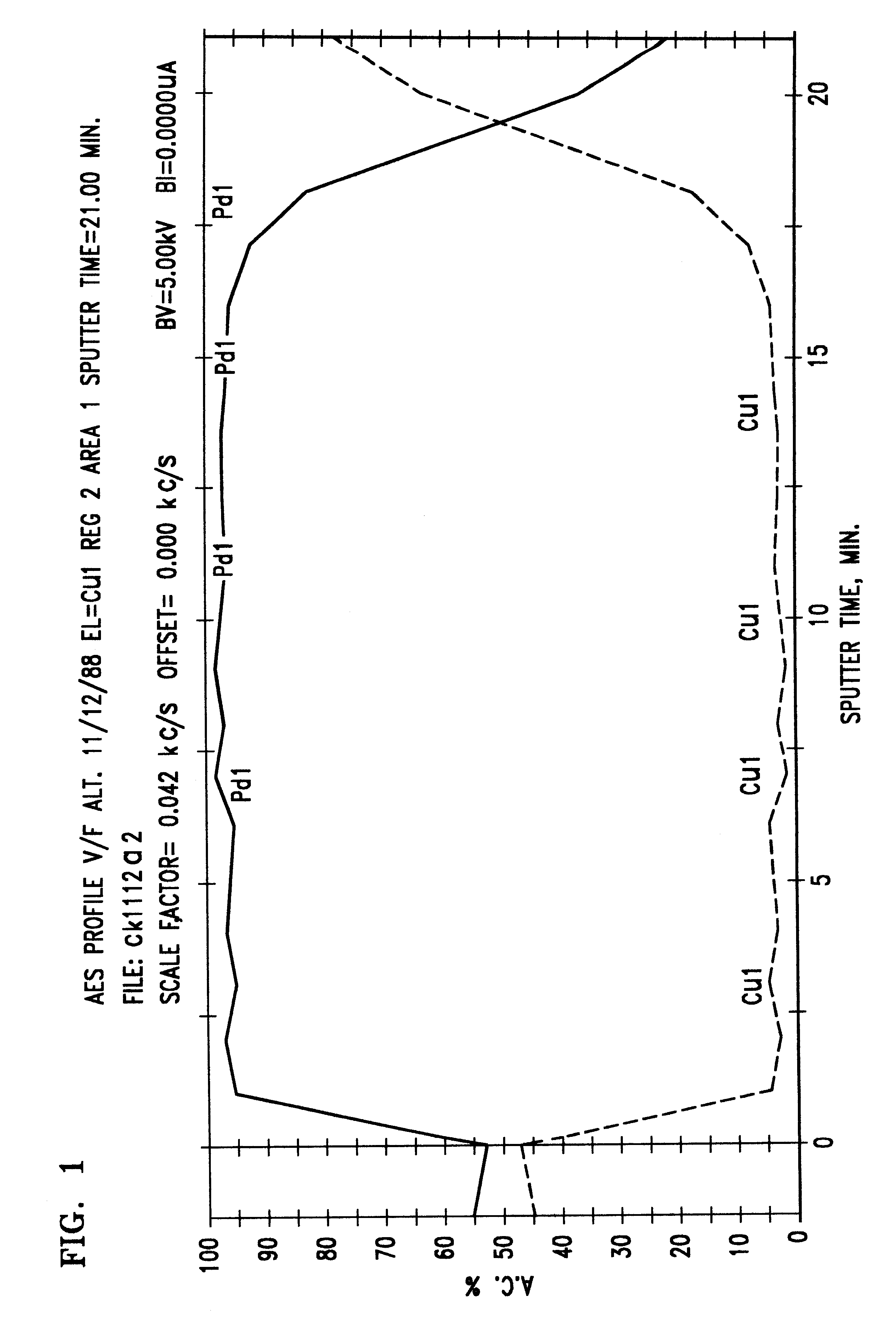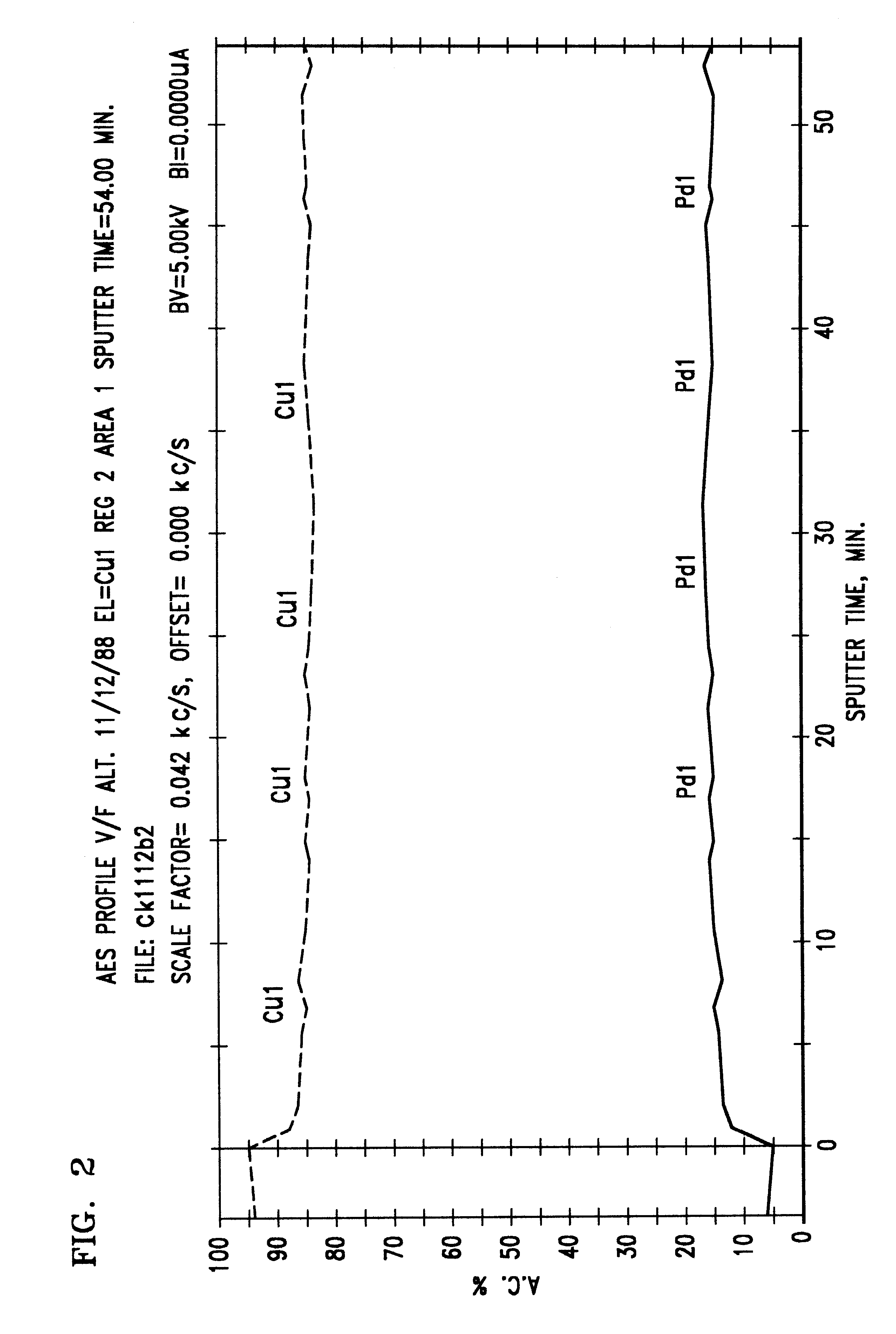Method of producing thin palladium-copper and the like, palladium alloy membranes by solid-solid metallic interdiffusion, and improved membrane
a palladium alloy and palladium alloy technology, applied in the direction of membranes, separation processes, transportation and packaging, etc., can solve the problems of not disclosing the method of fabricating thin foils for use as hydrogen separation membranes, increasing costs disproportionately, etc., to improve the fabrication facility, cost and performance
- Summary
- Abstract
- Description
- Claims
- Application Information
AI Technical Summary
Benefits of technology
Problems solved by technology
Method used
Image
Examples
Embodiment Construction
For structural reasons, it is advantageous to provide at least one of the two metals in the form of a thin foil, and to plate thereon finely divided particles of the other metal. Thus, a thin copper foil or layer can be coated on each side with substantially equally thick layers of palladium metal, for example by electroless plating; and, similarly, a thin palladium foil can be so coated with copper metal layers, for example by electroplating. Further very thin (typically less than one micrometer in thickness each) solid alternating palladium and copper films, such as are vacuum sputtered on a flat substrate, can readily be alloyed by such metallic interdiffusion.
By way of example demonstrating the metallic interdiffusion of the invention, an 8 micrometer thick copper foil specimen, 3 cm.times.3 cm, was coated with 0.05 micrometer thick palladium metal on each side by electroless plating at 65.degree. C. for 90 minutes from a solution consisting of 1.9 ml of 8.48% w / w Pd(NO.sub.3).s...
PUM
| Property | Measurement | Unit |
|---|---|---|
| melting point | aaaaa | aaaaa |
| thick | aaaaa | aaaaa |
| thick | aaaaa | aaaaa |
Abstract
Description
Claims
Application Information
 Login to View More
Login to View More - R&D
- Intellectual Property
- Life Sciences
- Materials
- Tech Scout
- Unparalleled Data Quality
- Higher Quality Content
- 60% Fewer Hallucinations
Browse by: Latest US Patents, China's latest patents, Technical Efficacy Thesaurus, Application Domain, Technology Topic, Popular Technical Reports.
© 2025 PatSnap. All rights reserved.Legal|Privacy policy|Modern Slavery Act Transparency Statement|Sitemap|About US| Contact US: help@patsnap.com


